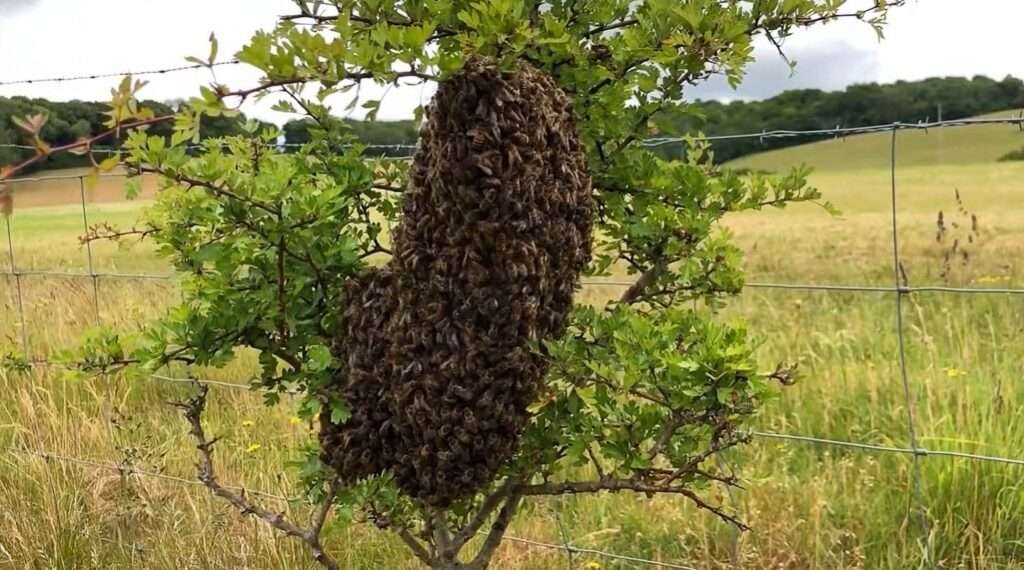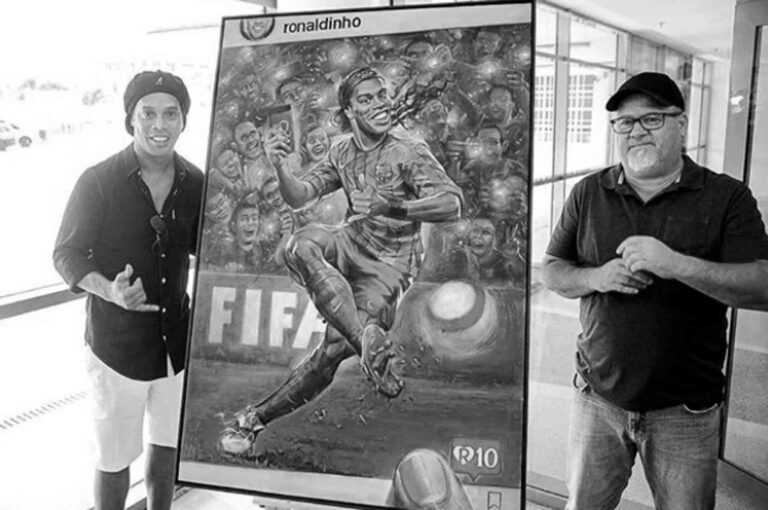A swarm of honeybees has the potential to create enough electrical energy to have an impact on local weather conditions, scientists in Great Britain have found.
Researchers have discovered that large swarms of honeybees can generate astonishing levels of electricity which is discharged into the atmosphere.
The charge can affect water droplets in the air or how dust is dealt with in the atmosphere.
And some swarming insects – like locusts – can produce as much electrical charge as a lightning storm, says the study.
Insect swarms can occur at various altitudes. They often consist of a single species such as honeybees, locusts and butterflies.
Ellard Hunting – a research associate at Bristol University’s School of Biological Sciences – and his six study co-authors compared the electrical contribution of various swarming insect species with common sources of charge.
To find out whether honeybee swarms can cause atmospheric variations, the Bristol University biologists carried out a series of measurements at the university’s own field station.
The site contains several honeybee hives for research purposes which exhibit their typical swarming behaviour in the event of overcrowding.

The western honeybee is the most common honeybee species in the world. One colony normally consists of 20,000 to 50,000 animals.
Insects not only pick up positive charge while resting on electrically charged surfaces, but also from the friction of air molecules against their wings as they collect nectar.
The experts used combined information from published charge measurements of honeybees and their own measurements.
They eventually developed a three-dimensional element analysis model to evaluate the effect of swarming honeybees on local atmospheric electric fields.
Their results confirm that a swarm of honeybees contains enough charge to affect the atmospheric electricity in proportion to the swarm density.
Dr Hunting said: “The atmosphere hosts multiple sources of electric charge that influence critical processes such as the aggregation of droplets and the removal of dust and aerosols. This is evident in the variability of the atmospheric electric field.
“While these electric fields are known to respond to physical and geological processes, the effect of biotic sources of charge has not yet been considered.
“The observed transport of charge by insects demonstrates an unexplored role of biogenic space charge for physical and ecological processes in the atmosphere.”
Hunting underlined the importance of continuous monitoring of atmospheric electric fields to “develop a detailed understanding of a wide array of atmospheric, biological, and geological processes.”
He added: “We propose a new perspective based on the idea that organisms that inhabit the lower atmosphere can act as a source of atmospheric space charge and associated atmospheric electrical variability.”
The Bristol University researchers published their study entitles “Observed electric charge of insect swarms and their contribution to atmospheric electricity” in the scientific magazine iScience.
The University of Bristol was the first higher education institution in England to admit women on an equal basis to men except for medicine courses when it first opened in 1876. It is today organised into six academic faculties.
To find out more about the author, editor or agency that supplied this story – please click below.
Story By: Thomas Hochwarter, Sub-Editor: Marija Stojkoska, Agency: Newsflash
The Ananova page is created by and dedicated to professional, independent freelance journalists. It is a place for us to showcase our work. When our news is sold to our media partners, we will include the link here.




